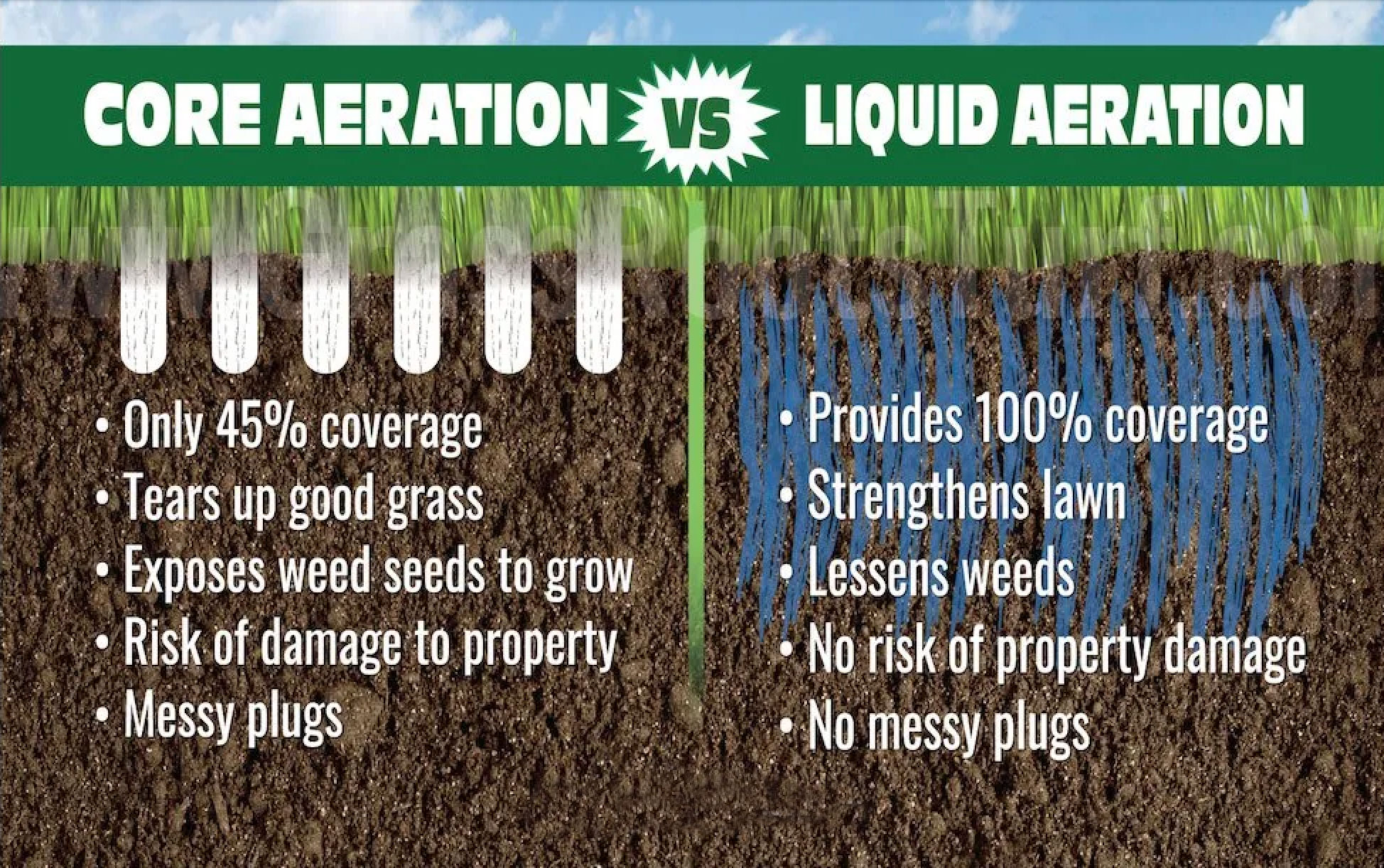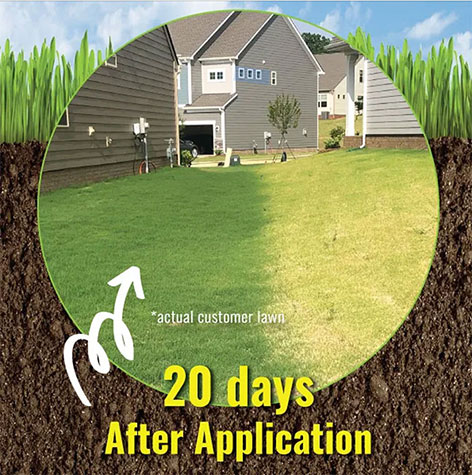At GrassRoots Turf of [PRIMARY-GEO], our expert team is made up of locals who know this area like the back of their hand! We know just what it takes to keep lawns in [PRIMARY-GEO],[GEO2],[GEO3],[GEO4],[GEO5] and the surrounding areas looking their absolute best. Our liquid aeration and fertilization services use a blend of the latest technology and proven science to balance your soil’s pH and keep your turf as healthy as possible.
By creating microscopic holes in soil that help it to absorb water, fertilizer, and oxygen more efficiently, liquid aeration gives your lawn the best chance to grow healthy and strong. Not sure if liquid aeration is the right choice for your lawn? Here are just a few of our customers’ most frequently asked questions about liquid aeration.
Because of soil’s natural characteristics, water, fertilizer, and oxygen often have difficulty reaching the turf’s roots to provide it with the essentials that it needs to grow. Aeration reduces soil compaction, which creates space for chemical nutrients and oxygen to penetrate the soil. Once your lawn has been aerated, its roots are able to spread out more and grow stronger. Better yet, the turf becomes more resilient to foot traffic, heat, and drought.
Traditionally, lawns have been mechanically aerated, which doesn’t penetrate as deeply into the soil or allow nutrients to reach the entire lawn. It’s also not particularly good at balancing your soil’s pH, which is essential to its health. Liquid aeration decreases soil compaction as well as or better than mechanical aeration, but it does so without physically disrupting the lawn. Because it’s applied as a liquid, it reaches the roots without traumatizing the grass or soil. It also provides much better coverage, reaching all parts of the lawn, and is more effective at balancing your soil’s pH.


In most cases, it takes about 24 hours for the liquid aeration to begin working. Depending on the climate and humidity at the time of your service, it may take up to four days for you to notice any results. For best results, you’ll want to thoroughly water your lawn for two weeks after treatment.




